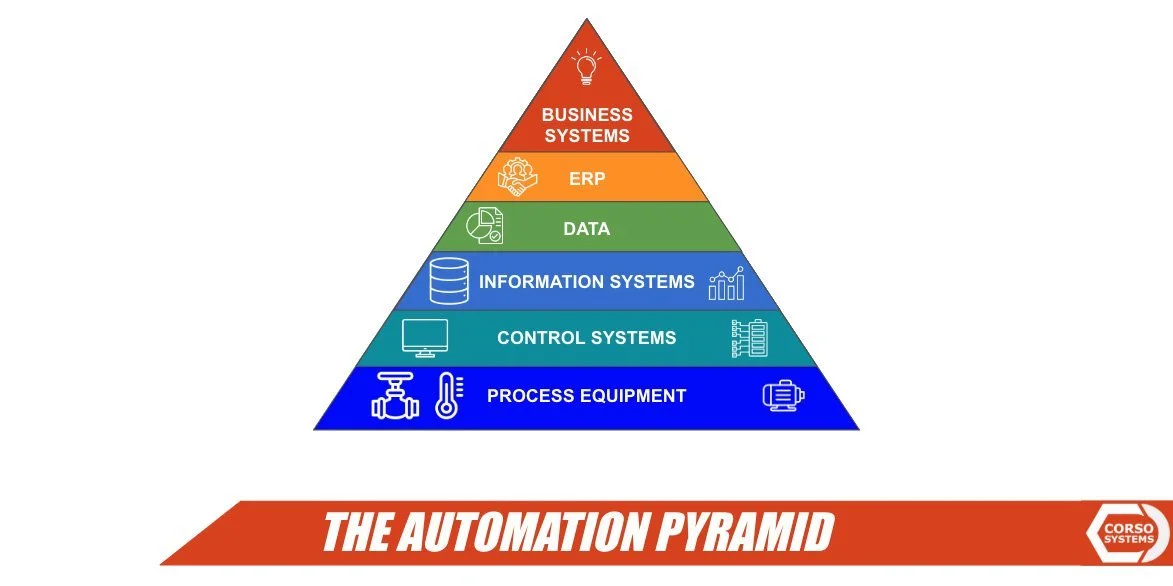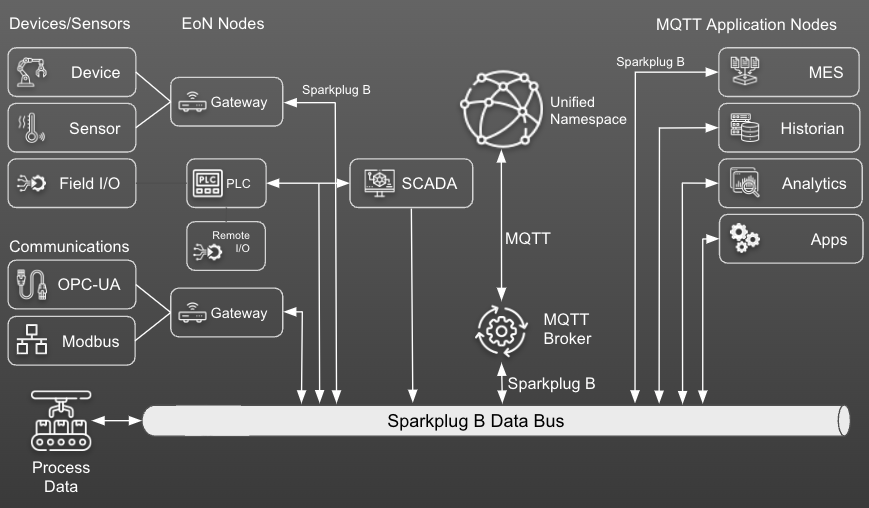Beyond the Buzzword: Enterprise
There’s a lot of buzz in the industry right now about Unified Namespaces (UNS), Industry 4.0, Digital Transformation, and giving your team the ability to monitor data across your entire organization.
Most of these concepts share the backbone of ISA-95 as the industry standard approach for modeling your company. This approach applies to everything from your manufacturing process up to the high level business applications you’re using to run your entire operation.
The term enterprise frequently appears in marketing materials, “think pieces”, and discussions with end-users. In this post, we’ll explore what “enterprise” really means, who it applies to, and when you should start thinking about enterprise level integrations—especially compared to simply using a modern SCADA solution like Ignition at your company.
What is an Enterprise?
Regardless of your company’s size, enterprise refers to the sum total of all of the technology, tools, people, information, and systems running your business. This can all be contained in a single facility, or multiple facilities all around the world. The scale of your systems is the major difference between having one facility or dozens to hundreds of locations—as well as the total number of integrations you need to see a complete picture of your operations between every facility.
The Automation Pyramid that structures all of your business systems is an example of an enterprise’s smallest unit of measurement. This structure separates the process equipment, control systems, information systems, and SCADA systems, all of which provide production data for the higher level business systems like the ERP and beyond.
Leveraging these systems in a fully integrated environment allows for technologies like Production Scheduling that work with an ERP System and your manufacturing process. You can also have more robustly integrated quality control systems to improve production yields. These improved integrations can also help optimize your production operations with overall resource and demand planning.
Integrating your entire operation also can let you implement a Manufacturing Execution Systems (MES) to better understand production.
These integrations will work for companies with a single manufacturing plant and for companies with multiple facilities. For more than one plant or facility, you’ll only need to add more instances of the Automation Pyramid with each facility. Then, for a complete single view of your entire company, just the top levels of each pyramid will need to be integrated between all the facilities.
When Does Enterprise Integration Make Sense?
Enterprise integrations make sense for manufacturing companies of any size which need to better understand their operations as a whole. For example, here’s a project case study for a company with a single facility: Blommer Chocolate. In this case, we integrated almost a dozen different applications with Ignition across Blommer Chocolate to give them a single portal into all of their business functions.
Benefits from Blommer Chocolate’s enterprise integration:
The production scheduler no longer needs to juggle four different applications to make the production schedule.
We enabled just-in-time manufacturing by integrating Blommer Chocolate’s Warehouse Management system (WMS) with the plant floor to deliver raw materials when and where they were needed.
They now have real-time quality information from the plant floor, and can pull in recipes, orders, and shipping/receiving information to streamline orders as they’re produced.
An enterprise integration streamlined how they worked across the entire company and gave them the foundation for expansion into their other facilities using all of the templates and infrastructure we built at the first facility.
Ready for an Enterprise Integration?
Schedule a short, no-obligations intro call with Cody Johnson in sales.
Or Contact Us with your project details
What To Tackle First
The first step for an enterprise integration of any size is to set up a modern SCADA system capable of connecting to the rest of their systems. Our go-to choice is Ignition.
We like Ignition because it simplifies the process of integrating with other systems with a standardized Application Programming Interfaces (API). It’s also compatible with every database platform on the market, so it can access all the data you need to manage your operations.
Next, we focus on integrating everything in the overall structure of your business into a Unified Namespace.
The Unified Namespace approach builds a common language that everyone in your company can use for real time visibility into what they need for doing their jobs more effectively. A UNS simplifies the complex inner workings of your systems across the company while still allowing people to use purpose-built tools if they need to dig deeper into the data.
A unified namespace also enables incremental development, making it easier to manage the required cultural shift as you become a more fully integrated organization. We have found that starting small with a specific project (and some quick wins) will help your team see the value of a connected enterprise—without the added stress and fear that the new technology will replace their jobs.
Starting small also helps you understand what you need to know about the structure of your company as your technology base grows. It also doesn’t require a huge up front investment for re-tooling the entire company at once. Lastly, it’s an easier path for refactoring and renaming your systems as you become more familiar with what is possible.
Beginning with a small project is also great for companies with multiple production lines—and even multiple facilities. By starting with one line (and getting all the bugs worked out), you can then replicate the integrations across more facilities and lines without having to complete entire project at once.
Wrapping Up
Enterprise integrations don’t need to be overwhelming. Yes, you may need to shift your company culture, but the change will improve how you operate. It can even remove areas where inefficiencies can hide behind processes and cloudy data.
An enterprise integration will give you a more transparent operating paradigm with actionable insights and a better understanding of every moving part in your company.
The benefits of an enterprise integration will also give you a solid foundation for expansion well beyond the initial integrations and will bring your entire operation into the future!


